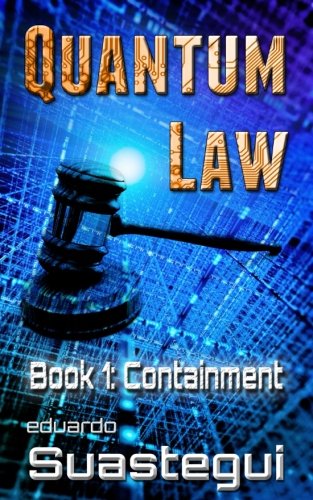The complex interaction between computer technology—especially computer-based intelligence and personality—and human identity and culture is a niche Eduardo Suastegui has made his own. In QL:C, he pushes the envelope a little further to explore how courts might be reconfigured to use unbiased, always-logical computer reasoning to make justice more equitable.
Set in a dystopian, post-apocalyptic USA, the novel focuses on the Los Angeles area, with action that sweeps west to the Port of LA, east to the Mohave Desert, and north into San Bernadino County
It isn't our Los Angeles, though; this city is a dreary place from which natural humans are mostly excluded in favor of hybrids and synthetic humans. Jerry Simmons has a rare opportunity to practice law before the Quantum Law court. It's even rarer than for most lawyers, because Jerry had one chance to do this before, and he blew it. But the client requested him specifically, and all Jerry has to do is accept.
No, actually that's not all; remember, this is a dystopian vision. Just to get to the court from his trailer in Temecula, Jerry has to pass through the armored checkpoints that keep unwanted humans from returning to homes from which they were evicted when Quantum Law was imposed. Before he can meet with his client, he has to pass a test designed to assess his loyalty to the system. And he must work with with a synth attorney, Advocate 359, despite the insistence of his client that the Quantum Law system is rigged against humans.
Jerry will need the help of this synth he calls "Ace", as well as all his skill and human ideals to deal with what's coming at him: motorcycle gangs, drone copters filled with hybrid agents, IEDs in the desert and suited sharks in the city. And always, the threat or promise of the Quantum Law court itself, from which any misstep could send Jerry into the same prison system from which he's trying to free his client. Or worse.
There are profound questions being addressed here, interwoven with the action sequences. Does true justice require absolute lack of bias? How can humans achieve it, short of handing over the courts to non-human decision-makers?
And deeper than that: how does the average man know—let alone find a solution—when the system is rigged against him?
I will be waiting impatiently for the next novel in this series. The Quantum Law concept, and Jerry and Ace, are winners.
Liner Notes:
- There is a real sense of the real terrain in Southern California in these novels, but a map of the LA Basin, the arid counties north and west of it, and the greener spaces south into Orange County might be helpful for visualizing—especially with a future time when the terrain has changed.
- Suastegui made it into my How-To Examples notebook with the elegantly terse way he encapsulated an internal question into a statement:
He held her gaze for a second or two, wondering: how much did she know about his trip to Mohave?

No comments:
Post a Comment